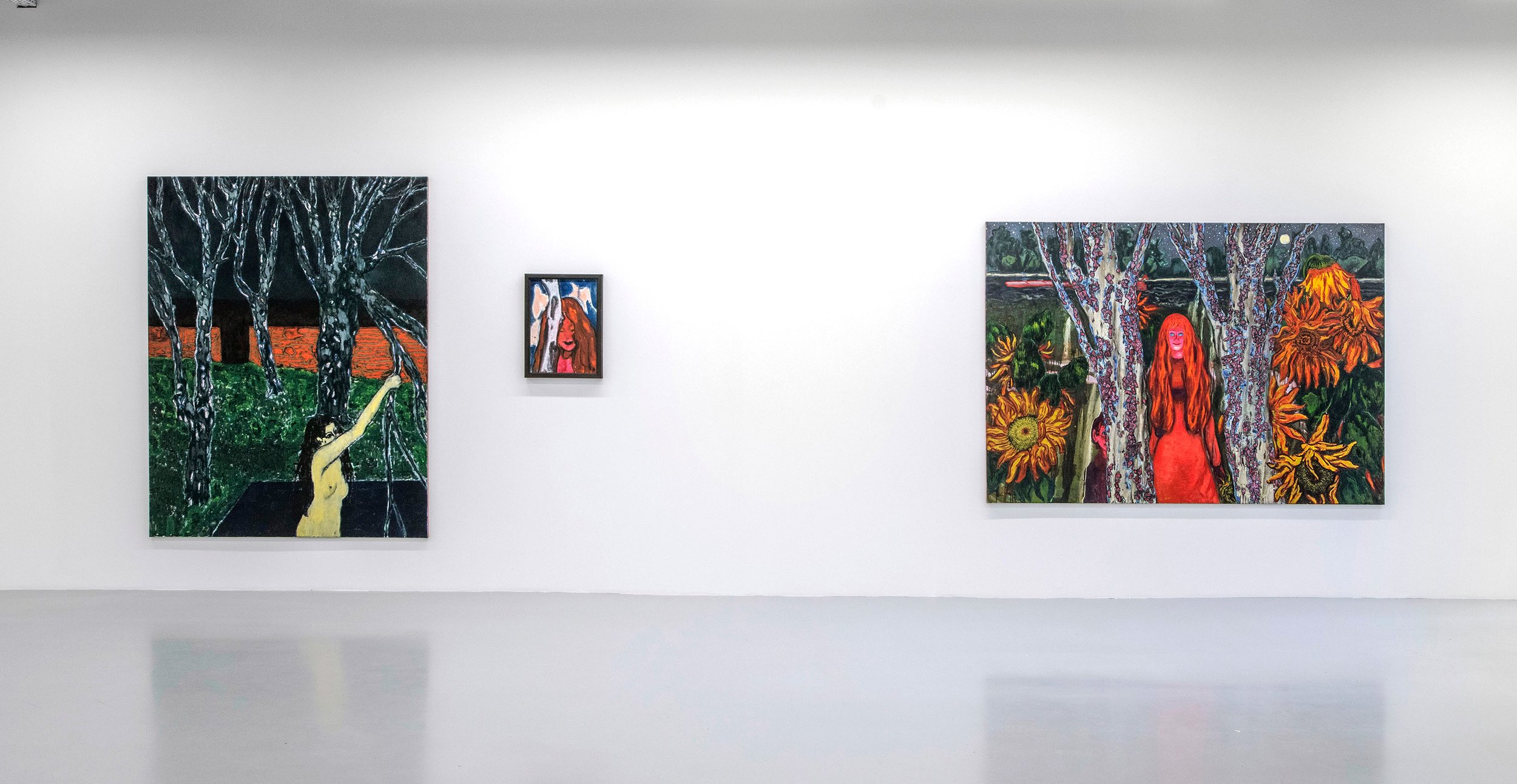Omar El Lahib

"Every picture is a journey into the unknown."
Our interview with Omar El Lahib discusses their process and show at Saatchi Yates Gallery.
Interview by Richard Starbuck.
Could you tell us a bit about yourself and your background? Where did you study?
At the age of 12 I learned to draw and paint. At the age of 16 I learned how to use oil paint and other painting materials. Shortly afterwards I had my own studio where I learned to experiment a lot. At the same time, I studied drawings of old masters and often painted in nature. Then I started studying at the Düsseldorf Art Academy. I studied painting and graphics and graduated in 2020.
In your second solo show at Saatchi Yates Gallery, the nocturnal settings of your works seem to invite a myriad of interpretations, offering a kind of transformative magic. How do you hope the audience will engage with the interplay between darkness and vibrancy in your landscapes?
A good picture or a good painting always raises many questions. I think a central component of painting is the subjectivity in one's own perception. But even for me as a painter, my pictures are often a great challenge both technically and mentally. There are many spaces in my pictures that are not clearly defined, where boundaries become blurred. Much of it is more of a gesture than an exact description of things. I want the viewer to use this incompleteness for themselves and get involved with it. Painting should also challenge the viewer as well as the painter. It arises at the moment of the process and can be poorly prepared. Every picture is a journey into the unknown.
Your use of ethereal female figures as connectors to the painting's dreamlike realms is striking. Could you elaborate on how these figures transcend conventional gender roles and what they represent in the broader context of your work?
I get asked this question very often and I can't find a clear answer myself. I still want to try it. It is clear that this female figure represents more than just a conventional gender role. Unlike in the landscapes, the female figure as well as the male figures in the picture enable me to give a purpose or a fate. The human figure, especially the female figure, is ideally suited to show a kind of fragility and at the same time the potential of the human being. But completely human attributes such as beauty, sadness, sexuality, anger and joy can also be expressed in this way, although they are not necessarily clearly recognizable.
The dialogue between humanity and nature is a recurring theme in your paintings. How do the discussions and critiques during your time at Kunstakademie Düsseldorf with notable painters and students contribute to the way you portray this relationship in your art?
The conversations in the art academy were very enriching. It is very strange that a work as intimate as painting is discussed in front of 25 to 40 people and very often smashed to pieces. The conversations were very focused on examining and questioning painting, its painterly quality. The topic was irrelevant. The relationship between humans and nature has always been the main motif of my painting, even before the academy. So I came to the academy as a painter, but didn't know how to express what I felt. The Düsseldorf Art Academy just gave me the time and confidence I needed to explore.
Solo show at Saatchi Yates, 2024
Sunflower Child, 2022-2023
suspicious eyed daydreamer, 2022
fraudulent lights, 2022
Poet's garden, 2022
Solo show at Saatchi Yates, 2024
Tell us a bit about how you spend your day / studio routine? What is your studio like?
My studio is about 60 square meters and has a high ceiling. It is located in Cologne. Opposite the entrance door there is a picture warehouse. There are walls on the right and left that I can use for painting. Most of the time there are pictures hanging there that I'm working on. To the left of the door there is a table where I draw and do colour studies in watercolor. There is also a small tea kitchen. I make coffee there every morning. I enter my studio between 9 and 10 a.m. and leave around 8 or 9 a.m. Sometimes, however, I take a long break and walk along the Rhine. I can reach the Rhine on foot. I love working during the day because the natural light doesn't distort the colors of the painting.
What artwork have you seen recently that has resonated with you?
There are a lot of works of art that appeal to me. Three artists always seem to keep me busy. All three have both nature and people as their main motif. Leonardo da Vinci, Henry Toulouse Lautrec and Edward Munch. With Leonardo it is the rock grotto Madonna, with Lautrec because of the quality of his drawings, and Munch because of the immediacy, because of the noticeable closeness and the strong feelings.
Is there anything new and exciting in the pipeline you would like to tell us about?
Yes. I think in the future I will work more with photography. I've already done it a few times and in the future I would like to work more with it and turn to many areas and topics of painting. A lot of things I drew from my head or from my memory. That will change in the future.
All images courtesy of the artist and Saatchi Yates Gallery
Interview publish date: 04/07/2024




